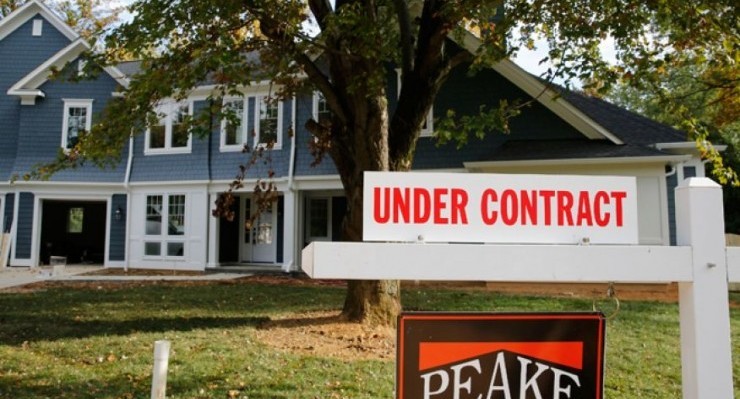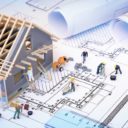

Existing and pending home sales reported by the National Association of Realtors. Photo: Reuters)
The National Association of Realtors reported on Tuesday existing home sales of single-family homes tanked by 10.5% in November to an annualized rate of 4.76 million units. The NRA survey missed economists’ expectations, as the median forecast called for a rate of 5.35 million units.
“Sparse inventory and affordability issues continue to impede a large pool of buyers’ ability to buy, which is holding back sales,” said Lawrence Yun, chief economist at NAR. “However, signed contracts have remained mostly steady in recent months, and properties sold faster in November. Therefore it’s highly possible the stark sales decline wasn’t because of sudden, withering demand.”
But other economists measuring mortgage risk in the housing market are more concerned about the increased push for looser credit standards than a month’s results likely reflecting an outlier. They call Yun’s assertion that there is a shortage of credit in the market nonsense.
“The typical first-time buyer these days puts little money down and has a credit profile that is far from stellar,” said Stephen Oliner, a senior fellow at UCLA’s Ziman Center for Real Estate and codirector of AEI’s International Center on Housing Risk. “Those who assert that credit is tight are ignoring the facts.”
The composite National Mortgage Risk Index (NMRI) for Agency purchase loans released last week reflected increased risk in the housing market during the same month. The NMRI, which tracks originations to gauge market share belonging to high-risk loans following the financial crisis, inched up to 12.34% in November and 0.67% from a year earlier. The monthly composite has increased on a year-over-year basis in every month reported since January 2014.
The risk has been fueled by Agency loan originations continuing to migrate from large banks to non-banks in November. This shift in market share has accounted for much of the upward trend in the composite NMRI, as non-bank lending is substantially riskier than the large bank business it replaces. Still, the data from Agency loan originations should not support a longer-term declining trend in existing home sales, which appears to be an area of agreement on both sides.
“It’s possible the longer timeframes pushed a latter portion of would-be November transactions into December,” Yun added. “As long as closing timeframes don’t rise even further, it’s likely more sales will register to this month’s total, and November’s large dip will be more of an outlier.”
The median existing-home price2 for all housing types in November was $220,300, or 6.3% higher than November 2014 ($207,200), marking the 45th consecutive month of year-over-year gains. Inventory fell 3.3% to 2.04 million existing homes available for sale las month, and is now down 1.9% from 2.08 million on a year-over-year basis. Unsold inventory is at a 5.1-month supply at the current sales pace, up from 4.8 months in October.
Further, the Federal Reserve announced this month it approved the first interest rate hike since the Great Recession following seven years of rock-bottom, near-zero rates. The policy-setting Federal Open Market Committee (FOMC) voted unanimously to raise rates by 0.25% to a range of 0.25%-0.50%, a small percentage but still enough to test the weakened U.S. economy’s ability to absorb the higher borrowing costs that will follow the increase.
“The Federal Reserve’s decision this month to raise short-term rates is the first of many increases over the next couple of years,” said Yun. “Although this first move will likely have minimal impact on mortgage rates, additional hikes will push borrowing costs to around 4.50% by the end of next year. With home prices expected to continue rising, wages and new home construction need to start increasing substantially to preserve affordability.”
Existing Home Sales Regional Breakdown
November existing-home sales in the Northeast declined 9.2% to an annual rate of 690,000, but are still 1.5% above a year ago. The median price in the Northeast was $254,800, which is 3.2% above November 2014.
In the Midwest, existing-home sales descended 15.4% to an annual rate of 1.10 million in November, and are now 2.7% below November 2014. The median price in the Midwest was $169,300, up 5.3% from a year ago.
Existing-home sales in the South decreased 6.2% to an annual rate of 1.98 million in November, and are now 5.7% below November 2014. The median price in the South was $189,400, up 6.3% from a year ago.
Existing-home sales in the West dropped 13.9% to an annual rate of 990,000 in November, and are now 4.8% lower than a year ago. The median price in the West was $319,700, which is 8.3% above November 2014.






